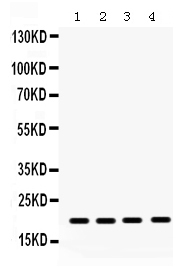Myeloperoxidase, the most well-known p-ANCA antibody, is most widely recognized. It is a 140kDa cationic molecule found primarily in the azurophilic granules from neutrophils, monocytes, and monocytes. This enzyme, which can account for as much as 5% of total cell proteins, generates anti-microbial chlorinated oxide species from hydrogen peroxide generated by the neutrophil respiratory burst.
Autoantibodies are able to recognize conformational determinants, but they do not block enzyme activity. Only 10-35% of P -ANCAs were found to have anti-myeloperoxidase activity in different studies. Anti-Myeloperoxidase is an enzyme found in neutrophil primary granules as well as monocyte lysosomes. You can know more about anti-myeloperoxidase antibodies via https://www.bosterbio.com/anti-myeloperoxidase-antibody-a00372-boster.html.

MPO is responsible for the conversion of hydrogen peroxide into hypochlorite or hypochlorous acid. MPO is encoded in a single gene. This gene undergoes translational modifications to make the active enzyme found within leukocytes. MPO autoantibodies can be found in many diseases and could play a role in the pathogenesis vascular inflammation in patients suffering from microscopic polyangiitis.
MPO ANCA may not be specific to MPA and can also be found in patients with systemic lupus erythematosus, Goodpasture syndrome, Churg-Strauss Syndrome, or lupus nephritis. Wegener granulomatosis, Lupus nephritis, Goodpasture syndrome and Lupus nephritis may also present with progressive renal failure and azotemia.
Systemic vasculitides such as Wegener’s Granulomatosis, Microscopic Polyangiitis, and Churg Strauss Syndrome are often associated with anti-neutrophil cell cytoplasmic antibodies found in active necrotizing or crescentic glomerulonephritis. This study shows that ANCA is more common in MPA cases than it is in Proteinase3 and Myeloperoxidase cases.

